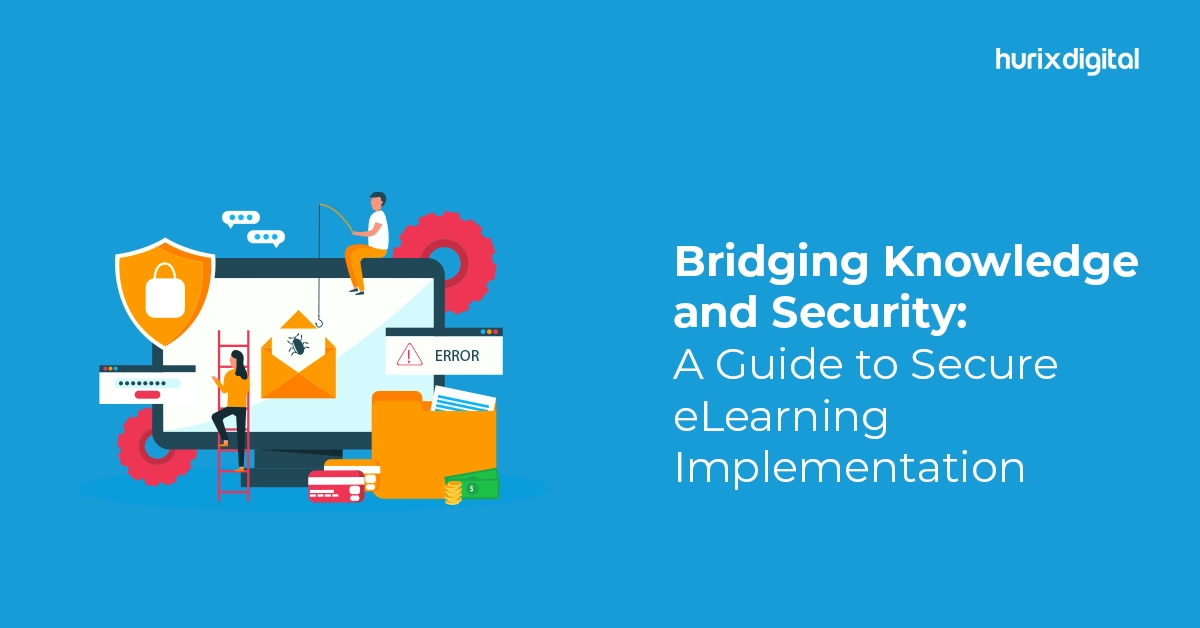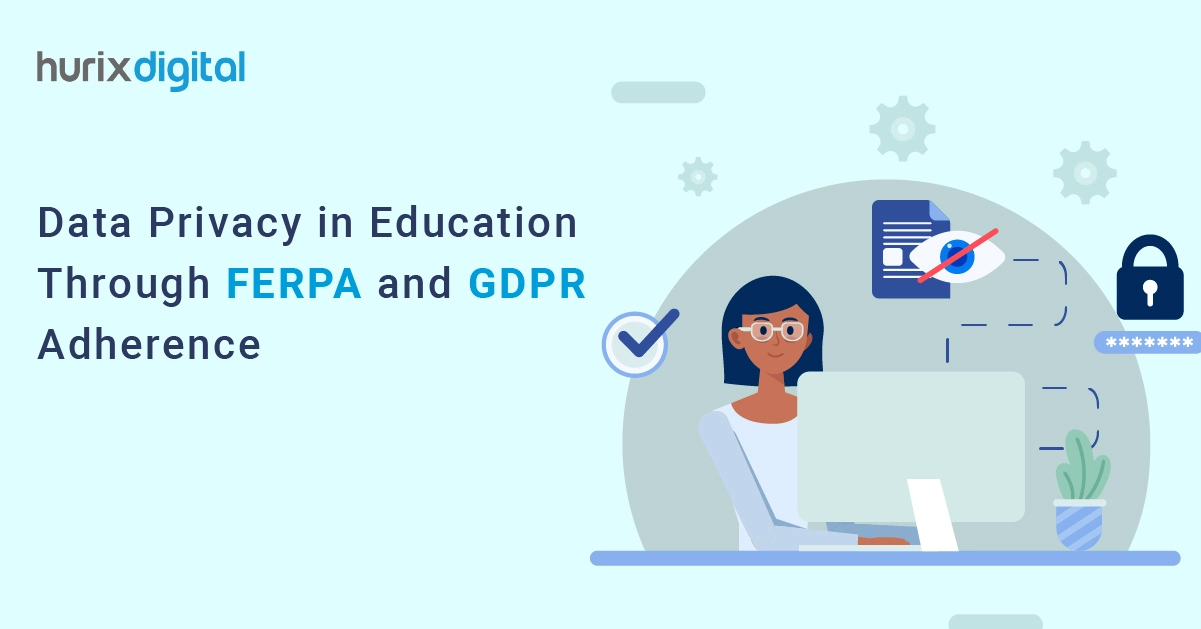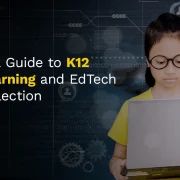
Bridging Knowledge and Security: A Guide to Secure eLearning Implementation
Summary
This blog emphasizes the necessity of security and privacy in the expanding eLearning sector, outlining best practices and potential risks of neglecting eLearning security.
The eLearning landscape is undergoing a dynamic shift, with the global eLearning market projected to reach a staggering $545.38 billion by 2030. Factors like remote work adoption and the increasing demand for continuous learning fuel this. This surge in eLearning adoption presents a fantastic opportunity for organizations to equip their workforce with the skills and knowledge needed to thrive in today’s dynamic business environment.
However, with this growth comes a crucial responsibility: ensuring the security and privacy of learners in online environments. eLearning security refers to the measures taken to protect sensitive data, such as student names, grades, and login credentials, from unauthorized access, cyberattacks, and data breaches.
Want to know more? Read this blog to explore the importance of eLearning security, the potential consequences of neglect, and best practices for building a secure learning environment.
Table of Contents:
- Why eLearning Security Matters
- The Potential Consequences of eLearning Security Neglect
- Building a Secure eLearning Environment: Best Practices
- The Role of a Trusted eLearning Provider in Security
- Conclusion
Why eLearning Security Matters
There are two primary reasons why eLearning security is paramount:
1. Protecting Sensitive Data
eLearning platforms often collect a wide range of personal information about learners, including names, contact details, grades, course completion data, and even learning progress within specific modules.
This data is highly valuable to cybercriminals. Stolen information can be used for identity theft, sold on the dark web, or even leveraged for targeted phishing attacks. Implementing robust security measures is essential to prevent breaches and safeguard this sensitive data.
2. Maintaining User Privacy
Learners have a right to privacy concerning their learning activities and progress. They deserve to be confident that their data is used solely for legitimate learning purposes and not shared with unauthorized third parties.
eLearning security ensures that this data is only accessed by authorized personnel, such as instructors and administrators, with a legitimate need to view it. This fosters a culture of trust and encourages learners to actively participate in online courses without privacy concerns.
Also Read: Exploring the Mobile Learning Gap: Why it Should Be the Norm in Workforce Learning and Development
The Potential Consequences of eLearning Security Neglect
Failing to prioritize eLearning security can have a devastating impact on your organization. Here are some potential consequences to consider:
- Data Breaches: A data breach can expose learner information, such as names, email addresses, and even Social Security numbers (depending on your platform), to unauthorized individuals. This can lead to severe financial repercussions due to regulatory fines and the need to notify affected individuals.
- Financial Losses: Cyberattacks can also result in financial losses beyond regulatory fines. Organizations may need to invest significant resources in data recovery, system repairs, and credit monitoring for affected learners.
- Reputational Damage: A data breach or cyberattack can severely damage your organization’s reputation. Learners and stakeholders may lose trust in your ability to safeguard their data, leading to negative publicity and a decline in enrollment rates.
- Disruption of Learning Activities: Cyberattacks can disrupt workforce learning activities by making the eLearning platform unavailable or rendering course materials inaccessible. This can hinder employee development and negatively impact your organization’s overall productivity.
Building a Secure eLearning Environment: Best Practices
By prioritizing eLearning security, you can create a safe and secure corporate learning environment for your workforce.
Here are some key strategies to fortify the security of your eLearning platform:
- Robust Authentication Mechanisms: Implementing strong authentication protocols, like multi-factor authentication (MFA), significantly enhances security. MFA requires users to provide multiple forms of verification before accessing the platform, such as a password and a unique code sent to their mobile device. This adds an extra layer of security and makes unauthorized access significantly more difficult.
- Encryption: Safeguarding Data in Transit and at Rest: Encrypting data both in transit (between users and the platform) and at rest (stored on servers) is crucial. Encryption scrambles data into an unreadable format, rendering it useless even if intercepted by malicious actors. Look for eLearning providers who utilize industry-standard encryption algorithms like AES-256 for maximum data protection.
- Regular Security Audits and Assessments: Conducting regular security audits and penetration testing helps identify vulnerabilities in your eLearning platform before they can be exploited. These assessments involve simulating cyberattacks to identify weaknesses in your security posture. Proactively addressing vulnerabilities can significantly reduce the risk of successful cyberattacks.
- User Education and Awareness Programs: It is essential to educate learners about cybersecurity best practices, such as creating strong passwords, recognizing phishing attempts, and avoiding suspicious links. Empowering your workforce with knowledge empowers them to be active participants in protecting the security of the learning environment. Regular training sessions and awareness campaigns can significantly reduce the risk of human error leading to security breaches.
- Least Privilege Access Control: Implementing the principle of least privilege ensures that users only have access to the information and functionalities they need to perform their specific roles. This minimizes the potential damage caused by compromised accounts and prevents unauthorized access to sensitive data.
- Secure Development Practices: Organizations should choose eLearning providers who adhere to secure development practices throughout the software development lifecycle. This includes practices like code reviews, vulnerability scanning, and secure coding techniques to minimize the introduction of security vulnerabilities during development.
- Incident Response Planning: Having a well-defined incident response plan in place is crucial for effectively responding to security incidents. This plan should outline the steps to take in case of a data breach or cyberattack, including containment, eradication, recovery, and communication. A well-rehearsed incident response plan ensures a swift and coordinated response to security incidents, minimizing damage and downtime.
- Compliance with Industry Regulations: Several industry regulations govern data privacy and security, such as the General Data Protection Regulation (GDPR) in Europe and the California Consumer Privacy Act (CCPA) in the United States. eLearning security measures should be designed to comply with relevant regulations to avoid legal repercussions and ensure user data is handled responsibly.
- Up-to-Date Software: It is essential to keep your eLearning platform software and any third-party integrations up to date with the latest security patches. Cybercriminals often exploit known vulnerabilities in outdated software. Regularly updating software ensures your platform remains secure and protected against evolving threats.
- Mobile Learning Security: With mobile learning’s growing popularity, organizations must also consider mobile security best practices. These include implementing strong authentication mechanisms for mobile apps, encrypting device data, and educating learners about safe mobile learning practices.
The Role of a Trusted eLearning Provider in Security
Partnering with a reputable eLearning provider with a proven security track record is vital.
Here are some key considerations when selecting a provider:
- Security Certifications: Look for providers who have achieved industry-recognized security certifications, such as SOC 2 or ISO 27001. These certifications demonstrate the provider’s commitment to data security and adherence to rigorous security standards.
- Data Residency Options: Depending on your organization’s location and data privacy regulations, you may want to choose a provider that offers data residency options. This ensures that your learner data is stored in a specific geographic location, potentially complying with local data privacy laws.
- Transparent Security Practices: Choose a provider that is transparent about its security practices. Look for providers who provide detailed information about their security measures, data encryption protocols, and incident response procedures.
- Regular Security Audits: Select a provider that conducts regular security audits of their platform and infrastructure. This demonstrates their commitment to proactive security management.
- Customer Support: Ensure the provider offers responsive and knowledgeable customer support to address any security concerns you may have.
Also Read: Ensuring Consistency and Quality in Translated Workforce Learning Materials
Conclusion
By prioritizing eLearning security, you can create a safe and secure learning environment for your workforce. This not only fosters trust among learners but also protects your organization from reputational damage and financial losses. When learners feel confident that their privacy is respected and their data is well-guarded, they are more likely to be engaged and successful in their online learning journey.
Hurix Digital is a leading provider of secure and effective eLearning solutions. We offer a comprehensive suite of features designed to protect your data and empower your workforce with the knowledge and skills they need to succeed. We also offer a range of services to further enhance your corporate learning security posture.
Contact us today to learn more about how we can help you build a secure and engaging online learning experience for your organization.

Performance, Results, Growth, and Life-Long Learning define my professional life. I am passionate about making workplace learning planful, purposeful, and impactful. I take pride in partnering with clients and bringing them the best in learning design and creating solutions that address business challenges.






